Yes, there are bears in Door County. With its abundant food sources and lush forests, Door County provides a unique habitat for wildlife, including bears. In this post, we’ll delve deeper into the question: “Are there bears in Door County?” Unraveling the mystery, we’ll delve into the presence of bears, their behaviors, and the measures to ensure safe coexistence. Whether you’re a nature enthusiast or a curious traveler, join us on this journey to discover the secrets of encountering bears in Door County, Wisconsin.
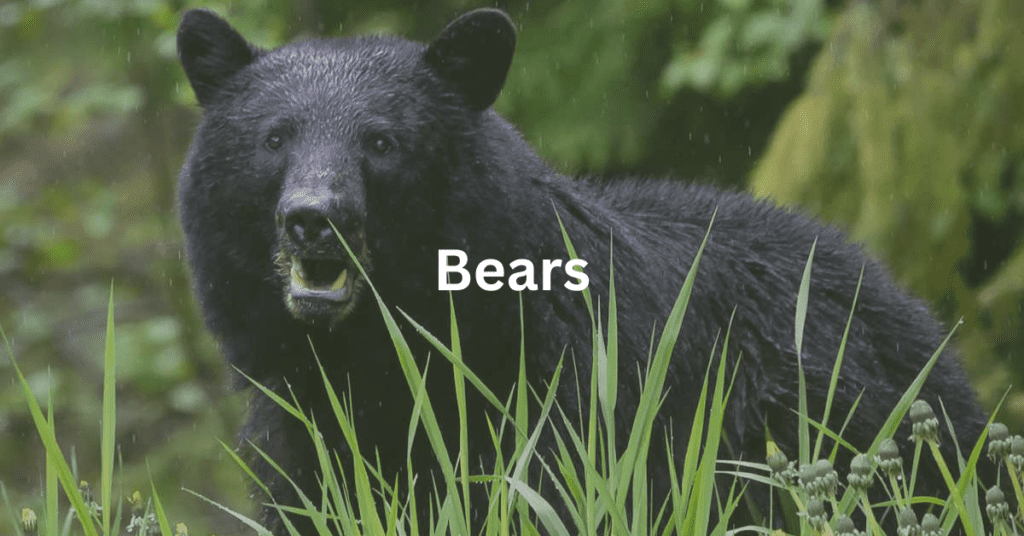
There Are Bears in Door County
Wildlife experts estimate that, at any given time, there may be up to fifteen bears roaming the area, although this number can fluctuate. However, according to the Wisconsin Department of Natural Resources, bears in Door County are classified as “rare,” indicating that they are not commonly found in the region.
“I’d guess most bears are younger males, passing through, likely looking for love in all the wrong places,” said Kevin Naze, a local wildlife expert. “I am not aware of any cubs ever seen on camera here. Most reports are in early summer, which is a bear’s mating season.”
I’d guess most bears are younger males, passing through, likely looking for love in all the wrong places.
Kevin Naze
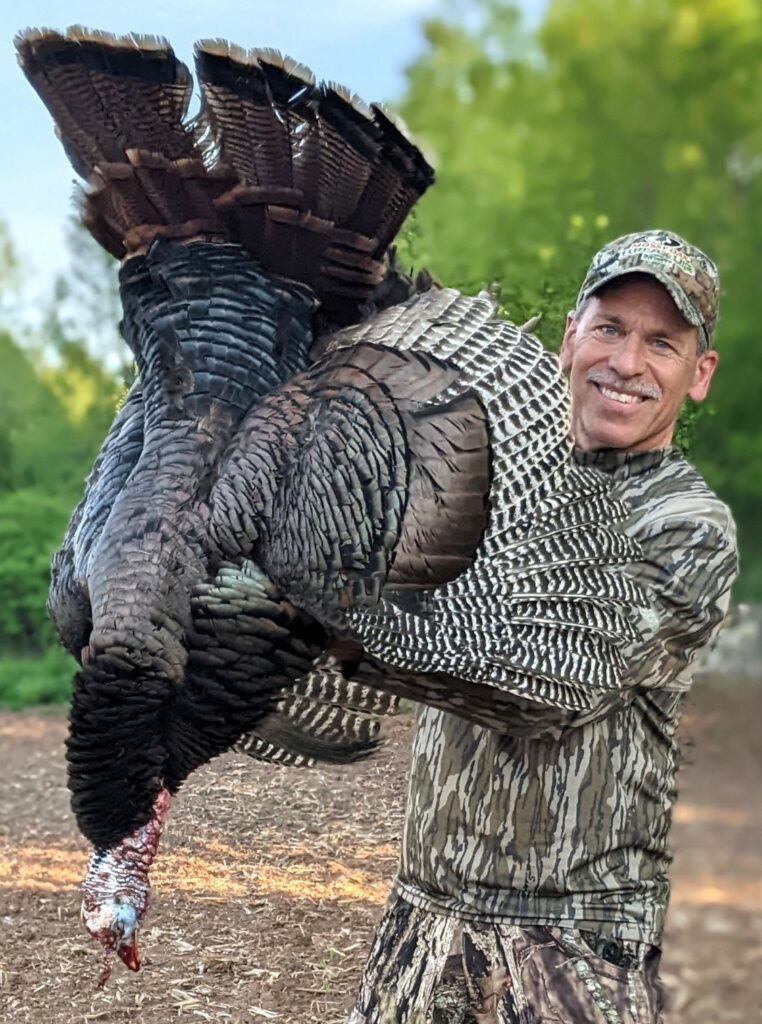
However, Steven Burns, Game Species Manager for the Wisconsin Department of Natural Resources, thinks that Door County may have a small permanent bear population: “Door County likely supports a small but stable population of bear. They are just not seen very often since bears are naturally reclusive and weary of humans. I would estimate a population between 5 and 15 bear in Door County.”
While bear sightings do occur, encounters with these majestic creatures are infrequent. They usually prefer to keep their distance from human settlements and tend not to be a significant nuisance to residents. One of the primary concerns arises for farmers, whose crops may occasionally be targeted by bears in search of food.
Overall, Door County offers a unique opportunity to witness these awe-inspiring animals in their natural habitat, but the chances of coming across them are relatively low due to their elusive nature. Let’s delve deeper into some of the reasons behind the rarity of bear encounters and the measures in place to ensure harmony between bears and the community.
Why Bear Sightings Are Rare in Door County
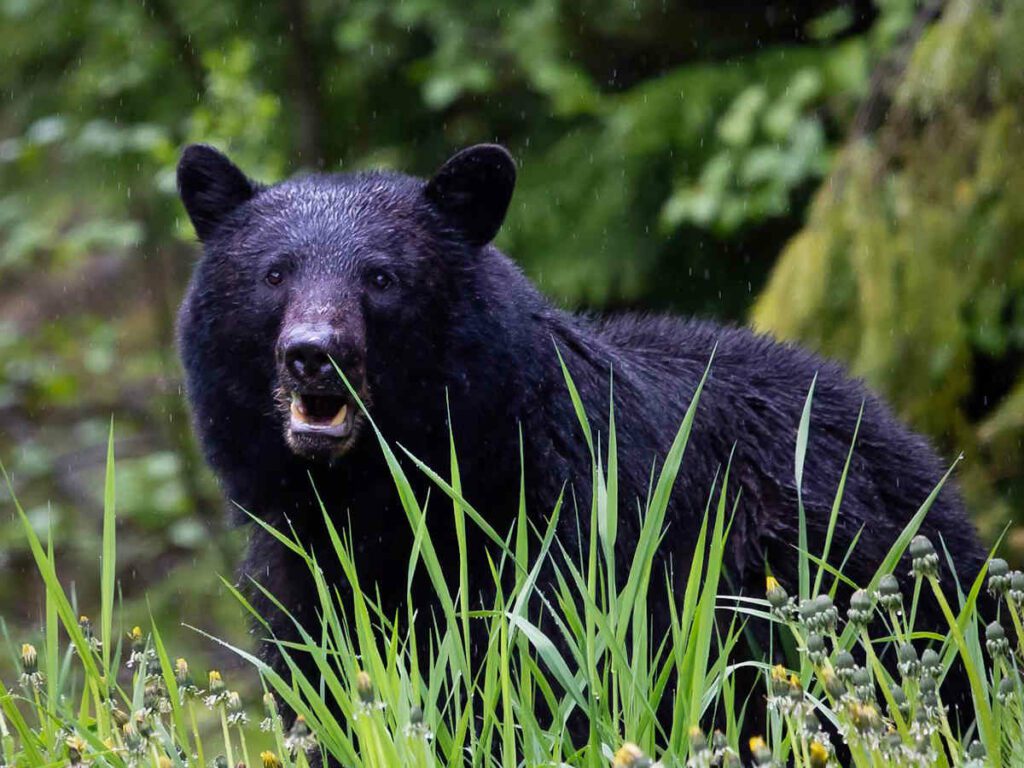
Bear encounters are relatively rare in Door County due to several factors that contribute to the bears’ elusive behavior and the region’s unique geographical characteristics. One of the primary reasons is a unique combination of isolated but densely forested areas that provide bears with ample cover and food sources.
On the one hand, Door County has some swaths of land that provide ideal bear habitat. These areas provide plenty of food and cover, which means that bears do not need to venture into areas that would bring them into contact with humans. Door County “does have isolated areas of great bear habitat,” said Burns.
Door County does have isolated areas of great bear habitat.
Steven Burns, Wisconsin Department of Natural Resources
Naze’s experience of bowhunting for bears in the Mud Lake area confirms that the combination of low numbers and plentiful food means that bears don’t have to venture too close to humans. “I tried bowhunting bear in the Mud Lake Wildlife Area decades ago. I had my bait opened most days, but never saw the bear. That was before trail cams. I did have a primitive string device that stopped a timer when the logs were thrown off the hole with the bait, and most nights it was about a half-hour after I left my stand. That means there was no competition for the bait (unlike northern WI, where many bears compete and thus have to arrive earlier).”
On the other hand, these prime bear habitats are isolated, both from each other on the Door Peninsula on account of human development, and on account of the Peninsula’s natural isolation from the rest of the state. “The Door Peninsula, by the very nature of it’s shape, does not provide huge swaths of uninterrupted habitat that large mammals like bears would prefer,” said Burns.
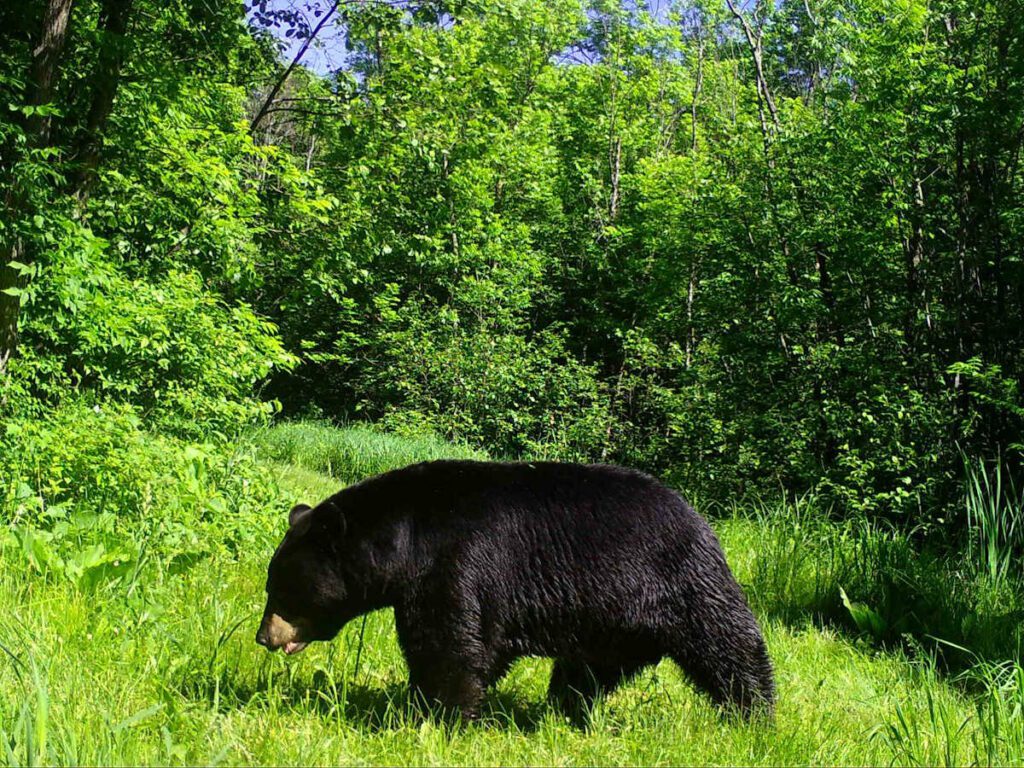
Moreover, the residents and authorities in Door County actively take measures to minimize human-bear interactions. They raise awareness about securing food sources, such as trash bins and bird feeders, to prevent attracting bears to residential areas. By following these guidelines, locals play a crucial role in maintaining the balance between human communities and wildlife.
“There was a time when bear complaints were more common up there in spring; bee hives and bird feeders damaged, garbage rummaged through, etc. I believe DNR wardens trapped and relocated a number through the years (to northern WI),” said Naze.
Additionally, the Wisconsin Department of Natural Resources implements responsible bear management practices to safeguard both bears and humans. This includes monitoring bear populations, conducting educational programs, and addressing any potential issues that may arise.
It is essential to remember that bears are naturally shy and tend to avoid human contact. Their elusive nature and the efforts of both residents and authorities help create a peaceful coexistence, allowing bears to roam the wild landscapes of Door County with minimal disruptions to the community.
In the next section, we will explore the classification of bears in Door County as “rare” by the Wisconsin Department of Natural Resources and what it means for wildlife conservation efforts.
The Wisconsin DNR Classifies Bears as Rare in Door County
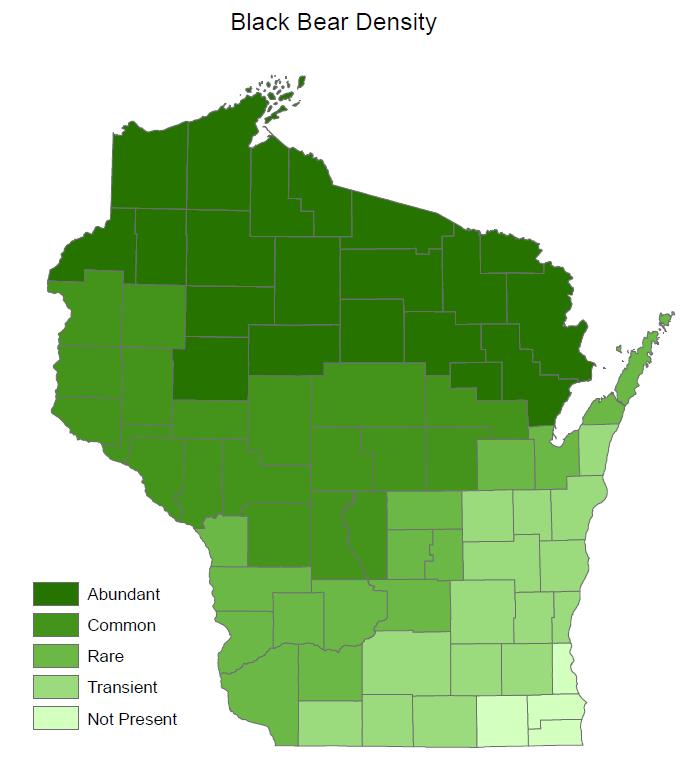
The Wisconsin Department of Natural Resources (DNR) classifies the prevalence of bears into five categories: abundant, common, rare, transient, and not present. Each classification represents the varying degrees of bear populations across the state.
In the dense forests of the North Woods, bears are most common, enjoying a habitat rich in resources. However, in urban areas like the Milwaukee metro area, bears are entirely absent due to the lack of suitable natural habitats and extensive human development.
In Door County, the situation lies between these extremes. Bears are present, but their population is not substantial enough to be considered common. Hence, they are categorized as “rare” by the Wisconsin DNR. This classification indicates that bear encounters are infrequent in the region, aligning with the experiences of locals and wildlife experts.

Even with all the time he spends outdoors and his efforts to encounter bears, Naze has only seen a bear in the area once. “The only bear I’ve seen in the area was in Algoma in the 1980s, up a tree near St. Mary’s school. I was a reporter for the local paper, and took pics of it before and after DNR tranquilized it. If I remember correctly, they relocated it to Oconto County, and within days it was in Manitowoc County. So they can really roam.”
Steven Burns reports that he has never seen a bear in Door County.
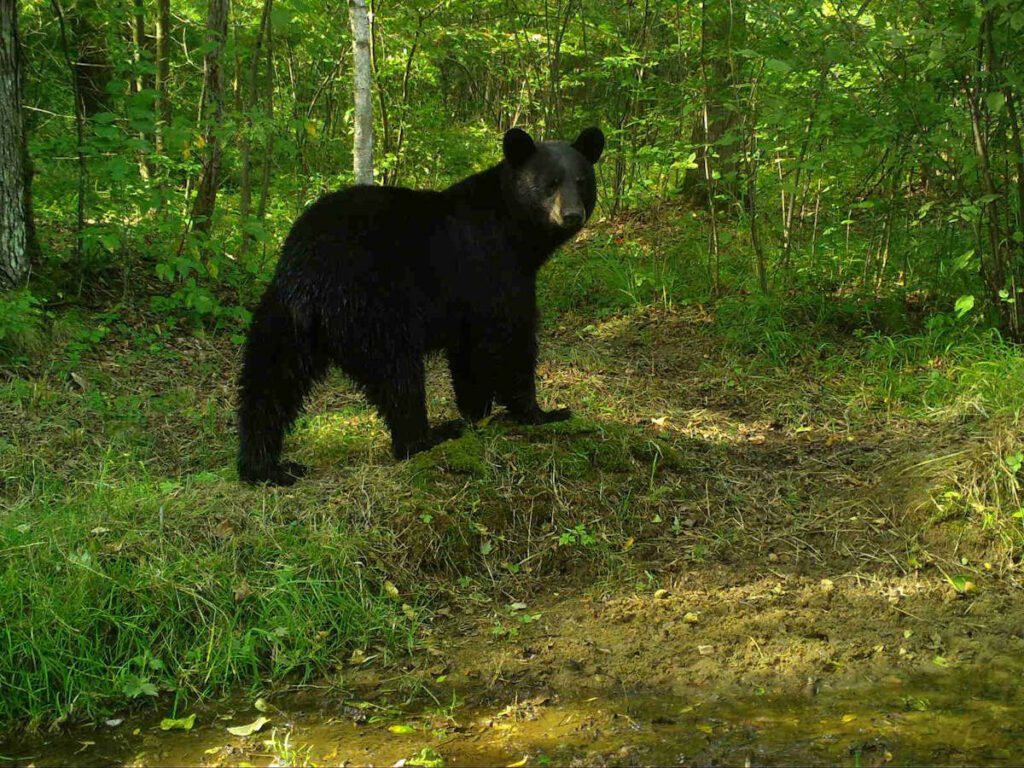
The classification as “rare” is not a cause for concern but rather a testament to the region’s commitment to responsible wildlife management. Door County’s residents, along with the Wisconsin DNR, play a vital role in maintaining the delicate balance between wildlife conservation and human activities. By designating bears as “rare,” it allows for focused efforts on monitoring and protecting the existing bear population while ensuring the safety and well-being of the community.
Even though bear sightings are not as common as in some other parts of Wisconsin, the occasional appearance of these majestic animals provides an exciting opportunity for residents and visitors to experience the wonders of nature.
What Kind of Bears Are in Door County?
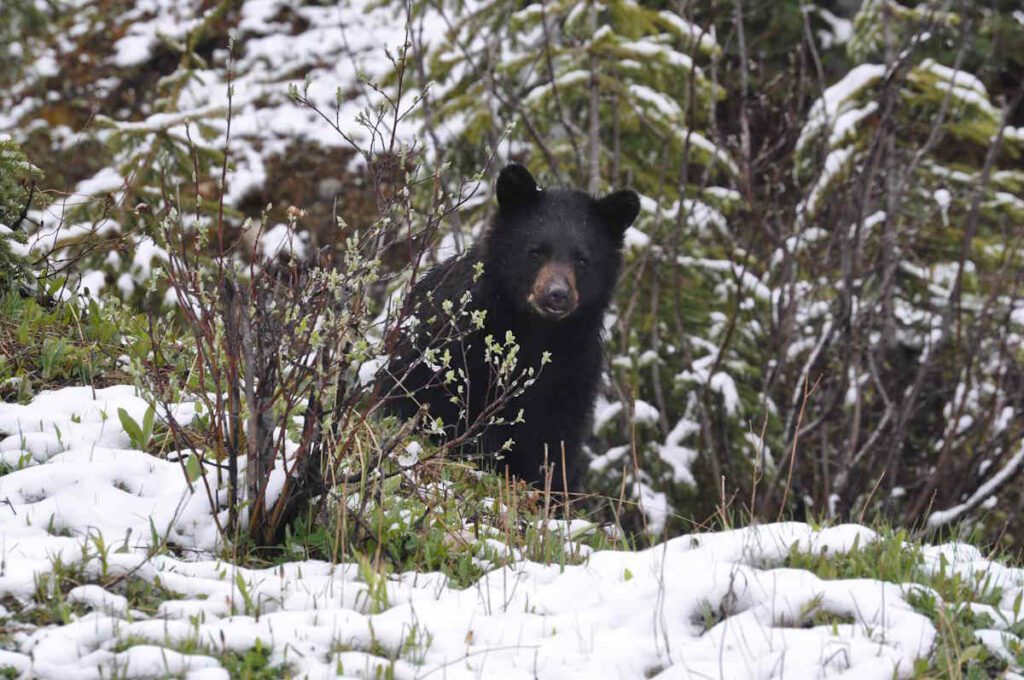
The bears found in Door County are known as black bears (Ursus americanus), a species that is widespread across North America. Despite their name, black bears can have fur ranging from black to various shades of brown, cinnamon, and even blonde. They are easily recognizable by their short, curved claws, which are well-adapted for climbing trees and digging.
Black bears are generally smaller than their relatives, the grizzly bears and polar bears. Adult males typically weigh between 200 to 600 pounds (90 to 270 kilograms), while females are slightly smaller, weighing around 100 to 400 pounds (45 to 180 kilograms). Standing on their hind legs, they can reach heights of 5 to 7 feet (1.5 to 2.1 meters).
In the scientific classification, black bears belong to the family Ursidae and the genus Ursus. They are further divided into 16 subspecies, inhabiting various regions of North America.
Times You Are More Likely To Encounter a Bear in Door County

If you’re hoping to catch a glimpse of bears in Door County, certain times of the year present better opportunities than others. Understanding their behavior and the availability of food sources can increase your chances of spotting these majestic creatures.
- Early Spring – Emergence from Hibernation: In early spring, as the weather begins to warm up, bears start emerging from their winter hibernation. During this time, food sources may still be scarce, driving bears to roam in search of nourishment. As they come out of hibernation, they are often more active and on the move, making early spring a time when bear sightings might be more likely.
- Mating Season – Roaming for Mates: Another period to keep an eye out for bear sightings is during their mating season, which typically occurs in late spring and early summer. Male bears, in particular, cover large distances in search of potential mates. This heightened activity can lead them to explore new territories and occasionally bring them closer to human-populated areas.
However, it’s essential to remember that bears remain elusive and tend to avoid human contact. Even during these active periods, bear encounters are still relatively rare, given their preference for remote and natural habitats.
As you explore the beautiful landscapes of Door County, be mindful of the wilderness and respect the natural behavior of the wildlife that calls it home. The opportunity to witness bears in their natural environment is a rare and thrilling experience, and by following the safety guidelines and being responsible stewards of the land, we can preserve the delicate balance between humans and bears.
Can You Hunt Bear in Door County?
According to Steven Burns, “Hunters with a valid permit can pursue bear in Door County; it is part of Management Unit F. 500 permits were issued in 2023 for all of Zone F. Actual harvest will be significantly lower than permit issuance.”
Bear have been harvested in Door County, but even dedicated hunters like Naze have been eluded by these creatures.
What To Do If You Encounter a Bear

If you happen to encounter a bear in Door County, it’s essential to remember that these animals are generally not aggressive towards humans. However, it is crucial to follow some safety guidelines to ensure a peaceful coexistence and minimize any potential risks.
- Remain Calm and Do Not Run: If you spot a bear, try to stay calm and avoid sudden movements. Running may trigger the bear’s instinct to chase, which could escalate the situation.
- Give the Bear Space: Respect the bear’s personal space and avoid approaching or cornering it. Slowly and quietly move away from the bear while keeping a safe distance.
- Make Yourself Known: Speak calmly and firmly, letting the bear know that you are there. Often, bears will choose to leave the area once they are aware of human presence.
- Back Away Slowly: If the bear is lingering nearby, slowly back away while keeping an eye on the bear. Avoid turning your back on the bear until you are at a safe distance.
- Avoid Eye Contact: Direct eye contact can be perceived as a threat to bears. Keep your gaze downward while being aware of the bear’s movements.
- Do Not Feed the Bear: Never offer food to a bear or leave food scraps or trash in the vicinity. Bears can become accustomed to human food, leading to potential conflicts in the future.
- Stay in Groups: If you are hiking or exploring the outdoors, try to stay in a group. Bears are less likely to approach larger groups of people.
- Use Noise and Make Yourself Big: In the unlikely event that a bear approaches you, make loud noises to try to scare it away. Raise your arms to appear larger and assert your presence.
- Avoid Surprising Bears: When walking on trails or near natural habitats, make noise to alert bears of your presence. This can help avoid surprising them, which might startle them.
- Report your bear sighting. The Wisconsin Departmet of Natural Resources collects data from bear sightings here: https://dnr.wisconsin.gov/topic/WildlifeHabitat/reports.html
Remember, bear encounters are infrequent in Door County, and following these safety tips can help ensure a positive experience for both humans and wildlife. By respecting the bears’ natural habitats and behaviors, we can help preserve the balance of this unique ecosystem. Enjoy the beauty of Door County while being mindful of its inhabitants, including the fascinating bears that call it home.
How To Avoid Attracting Bears To Your Property
Living in harmony with wildlife, including bears, requires taking proactive steps to minimize human-wildlife interactions, especially on your property. By following these guidelines, you can create an environment that discourages bears from being drawn to residential areas:
- Secure Garbage and Food: Bears have a powerful sense of smell and are attracted to food sources. Store garbage in bear-resistant containers and only put it out on the morning of trash pickup. Avoid leaving pet food, bird feeders, or any other food sources outside.
- Clean Outdoor Grills: After using an outdoor grill, clean it thoroughly, removing any food residue. Store the grill in a secure area, away from the house.
- Remove Fruit from Trees: If you have fruit trees, pick up fallen fruit promptly. Bears are attracted to fruit and may return to the area if they find a food source.
- Compost Responsibly: Avoid composting food scraps, as this can attract bears. Instead, use a composting system that keeps food waste away from wildlife.
- Keep Windows and Doors Closed: Ensure that windows and doors are securely closed when not in use, especially at night. Bears are curious animals and might try to enter homes if they sense food.
- Install Motion-Activated Lights: Installing motion-activated lights around your property can help deter bears and other wildlife from approaching too close.
- Use Bear Deterrents: If you live in an area with frequent bear sightings, consider using bear deterrents such as noise-making devices, bear spray, or electric fencing around potential attractants.
- Educate Your Neighbors: Encourage your neighbors to follow the same practices to create a collective effort in discouraging bears from approaching residential areas.
By being proactive and taking these preventive measures, you can significantly reduce the chances of attracting bears to your property. Promoting a bear-friendly community involves responsible behavior that respects the natural instincts and habitats of these magnificent creatures.
Real-Time Bear Data
The Wisconsin Department of Natural Resources offers some interesting real-time bear data here: https://widnr-snapshotwisconsin.shinyapps.io/DataDashboard/
Frequently Asked Questions
Stay calm, do not run, and slowly back away. Make yourself known by speaking calmly, and avoid direct eye contact. Never feed the bear.
Early spring after hibernation and during mating season in late spring and early summer offer better chances. Bears may be more active and visible during these times.
Secure garbage in bear-resistant containers, clean outdoor grills, remove fallen fruit, and avoid composting food scraps. Educate neighbors and use deterrents if necessary.
Summary
- There are bears in Door County.
- The number of bears in Door County fluctuates.
- Wildlife experts estimate up to twelve bears in Door County at any time.
- The Wisconsin DNR classifies Door County bears as “rare” due to limited prevalence.
- Bear sightings occur but are infrequent, as bears avoid human contact.
- Door County residents follow guidelines to avoid attracting bears to properties.
- Bears may be seen early in spring when food is scarce and during mating season while roaming for mates.
